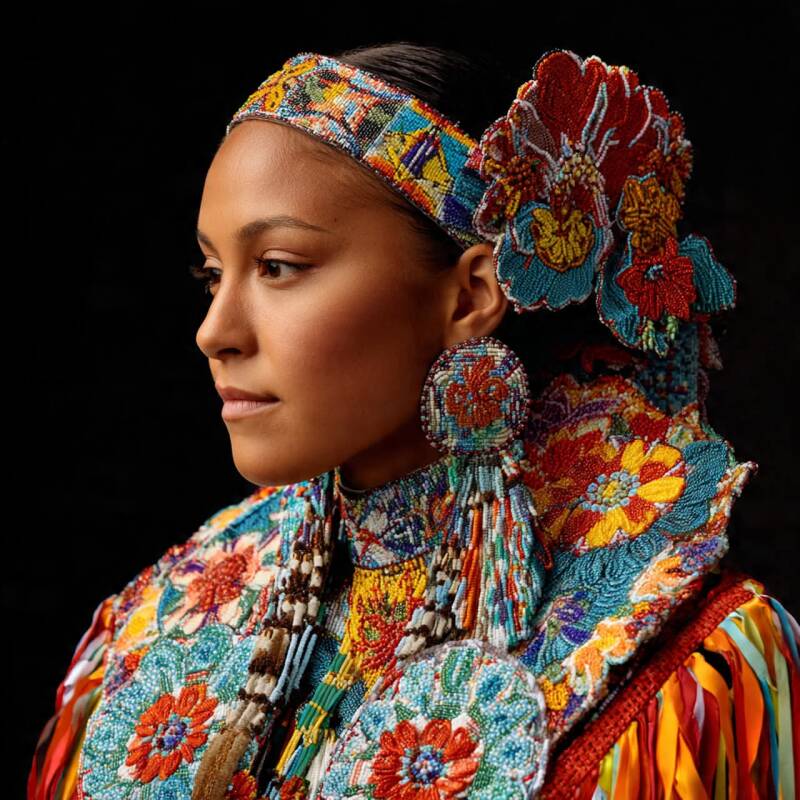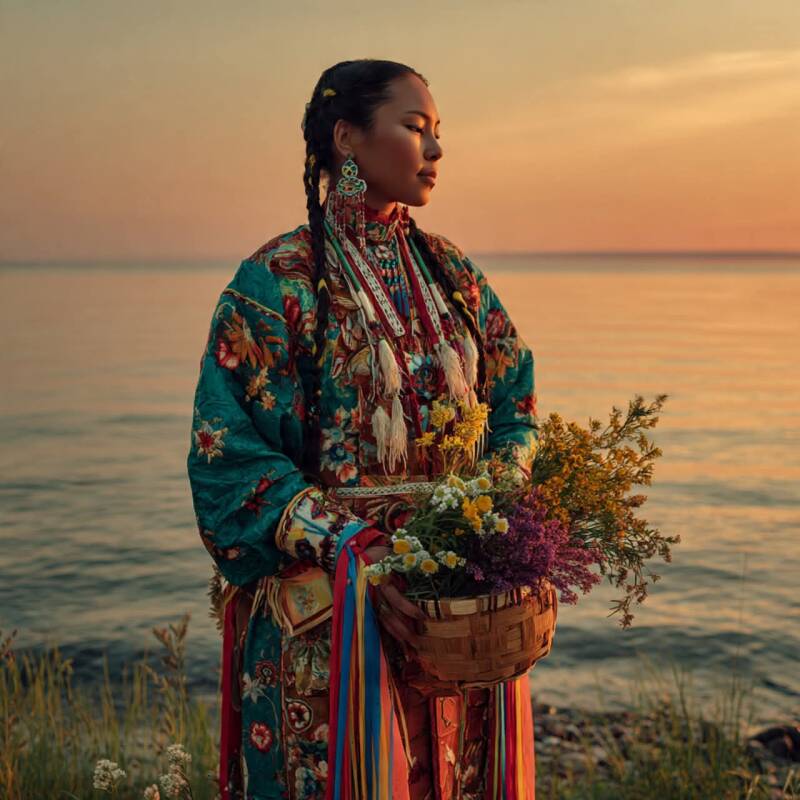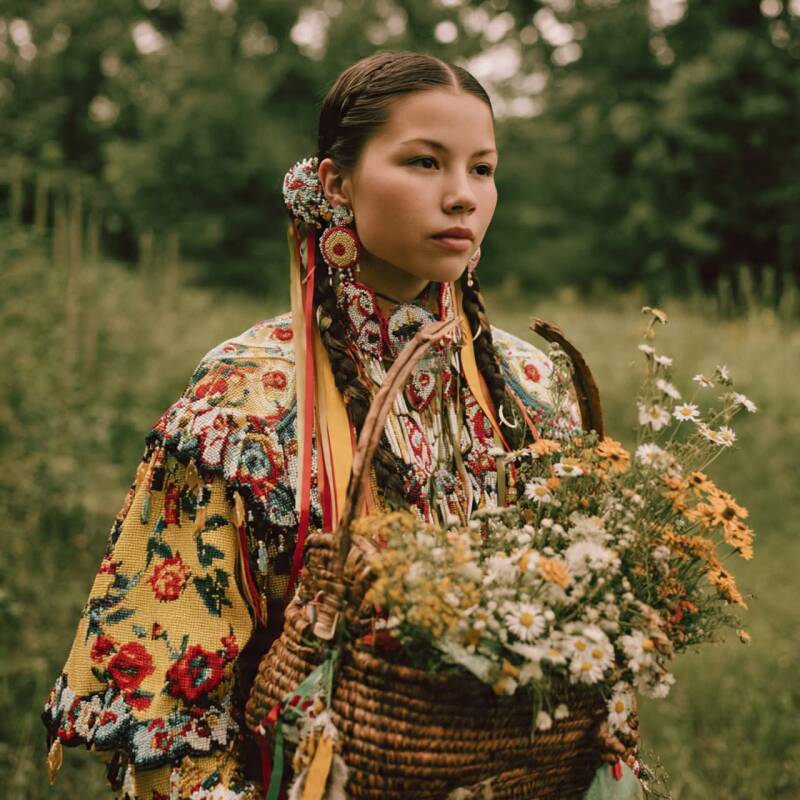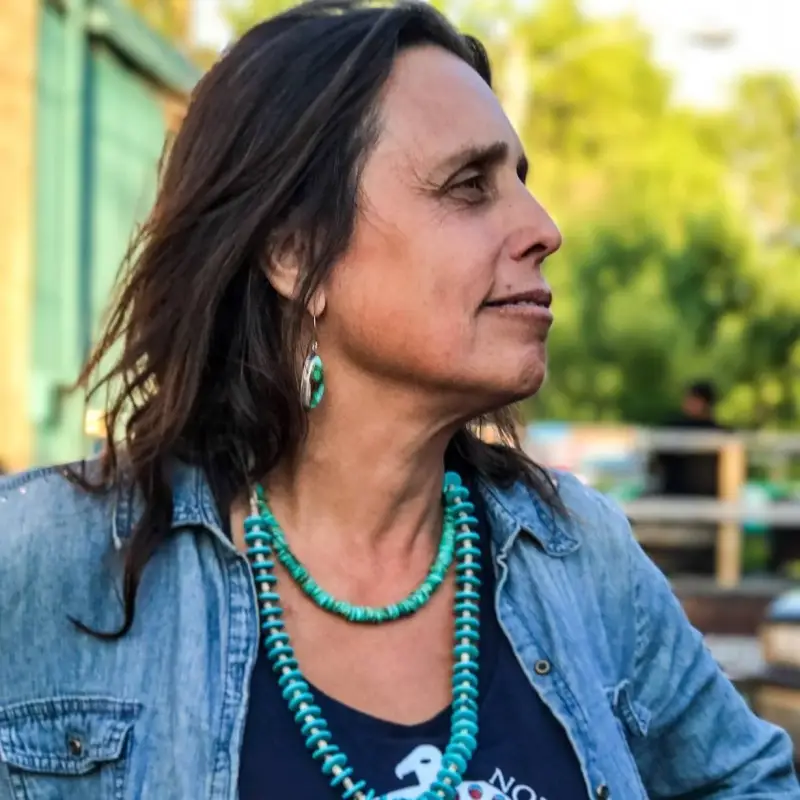
Across the deep lakes, cedar forests, and sweeping shorelines of the Great Lakes region, the Anishinaabe — known to many as the Ojibwe or Chippewa — have lived, moved, fought, and thrived for centuries. Their name, Anishinaabe, means “The Original People.” It is a declaration of identity that roots them deeply into the land, the lakes, the language, and the teachings carried across generations.
Yet much of what people think they know about the Ojibwe comes from colonial narratives — stories that flatten their complexity or ignore their contributions entirely. The truth is richer, older, and more profound.
This article honors the Anishinaabe in their own name, exploring their history, culture, political influence, and the spirit that continues to guide them.
A Homeland Defined by Water
The Ojibwe Anishinaabe traditionally inhabit the vast region surrounding the Great Lakes, including:
- Northern Michigan
- Wisconsin
- Minnesota
- Ontario
Their migration story, told through oral tradition, speaks of a great journey west from the Atlantic Coast, guided by seven prophets. They were said to travel until they reached a place where “food grows on water.” That prophecy was fulfilled when they found manoomin — wild rice — growing across the Great Lakes basin's lakes and wetlands.
This grain became more than food.
It became an identity.
A promise fulfilled.
A sign that they had come home.

A Culture Built on Teachings, Medicine, and Balance
Anishinaabe culture is guided by Seven Grandfather Teachings, a foundational philosophy emphasizing:
- Wisdom
- Love
- Respect
- Bravery
- Honesty
- Humility
- Truth
These aren’t abstract ideas — they are lived values woven into behavior, relationships, community decisions, and spiritual life. Every teaching is tied to a story, and every story carries responsibility.
The Midewiwin — Society of Medicine and Spiritual Knowledge
One of the most sacred institutions in Anishinaabe culture is the Midewiwin, also known as the Grand Medicine Society. It is not just a healing system. It is:
- a spiritual path
- a ceremonial tradition
- a keeper of ancient knowledge
- a protector of songs, teachings, and healing practices
The Midewiwin carries the deep teachings of creation, the relationship between humans and the land, and the importance of balance in all things.
A Political Force: The Three Fires Confederacy
The Ojibwe Anishinaabe are also a founding nation of the Three Fires Confederacy, alongside:
- Odawa (Ottawa) — the keepers of trade
- Potawatomi — the keepers of the hearth
- Ojibwe — the keepers of medicine
Together they formed a powerful alliance that shaped the political and cultural landscape of the Great Lakes for centuries. This confederacy protected trade routes, settled disputes, united nations, and resisted colonial encroachment long before American borders existed.
The Three Fires Confederacy remains active today, continuing the legacy of unity among Anishinaabe peoples across North America.

Language — The Spirit of the People
The Ojibwe language, Anishinaabemowin, is known for its beauty, complexity, and deep ties to the natural world. It is an animate language, meaning it recognizes life in places, objects, and beings that English never acknowledges. This worldview shifts everything — how land is perceived, how animals are related to, and how humans understand their role in creation.
Despite residential schools and government suppression, Anishinaabemowin is undergoing a renaissance. Elders, teachers, immersion schools, and online programs are breathing life back into what colonization tried to silence.
Artistry Rooted in the Land
The Anishinaabe are renowned for artistry that is practical, spiritual, and deeply connected to the land:
- birchbark canoes — engineering masterpieces
- birchbark baskets
- beautiful beadwork featuring florals and symbolism
- porcupine quillwork
- storytelling scrolls (Wiigwaasabak)
- moccasins, drums, pipes, and regalia
Their florals are instantly recognizable — vibrant, organic, and bursting with life. These patterns symbolize growth, medicine, and connection.
Resistance, Survival, and the Fight for Sovereignty
Like many Indigenous nations, the Anishinaabe faced:
- land theft
- broken treaties
- forced relocations
- boarding schools
- cultural suppression
- environmental destruction of wild rice beds
But what defines them today isn’t loss.
It’s endurance.
Wild rice harvesting remains a sacred tradition. Language revitalization is booming. Young Anishinaabe activists are leading environmental movements to protect water, land, and treaty rights.
They continue to practice what their ancestors taught:
“We are the Original People because we remember.”

A Famous Member of the Ojibwe Anishinaabe
Winona LaDuke
A world-renowned Anishinaabe activist, economist, and writer from the White Earth Nation. LaDuke is known for her environmental leadership, Indigenous rights advocacy, and powerful movement to protect land and water from corporate extraction. She has become one of the most influential Indigenous voices of the modern era.
Why Their True Name Matters
Using Anishinaabe instead of colonial labels honors:
- their sovereignty
- their language
- their identity
- their worldview
- their original teachings
- and their rightful place on the land
Names hold power — and returning these nations to their true names is a step toward restoring what colonization tried to erase.
Add comment
Comments